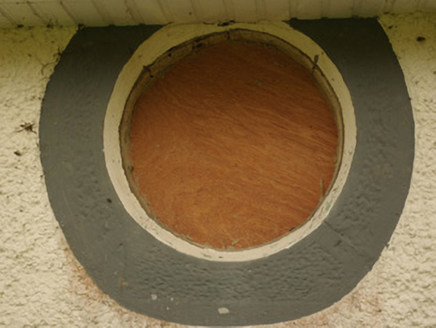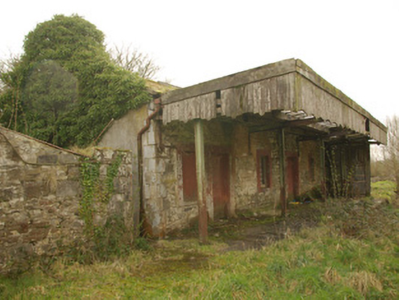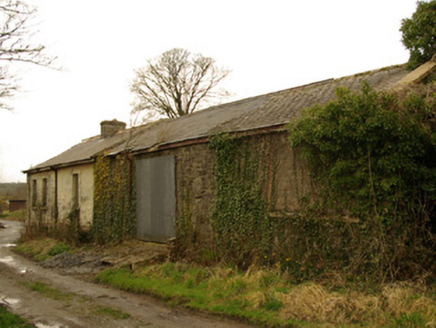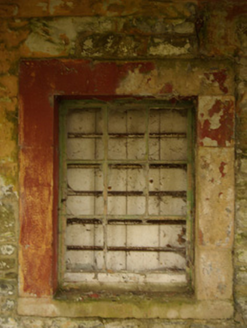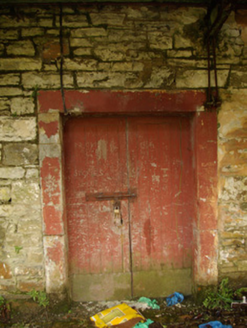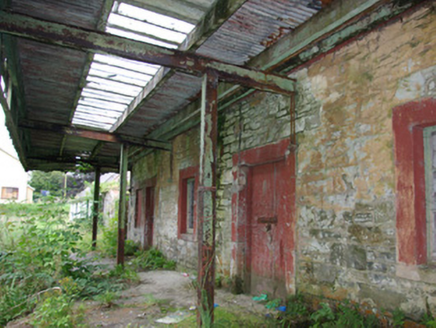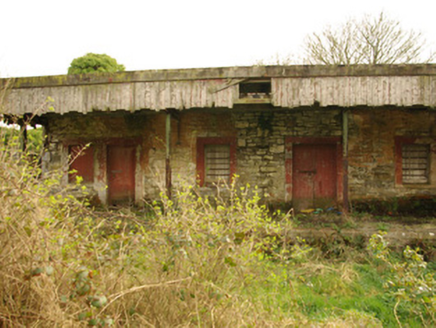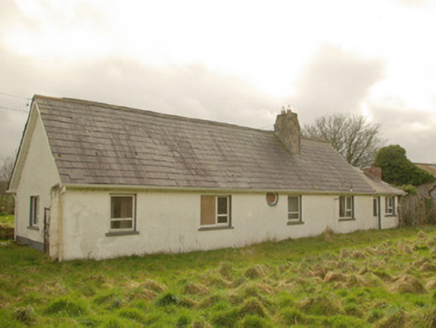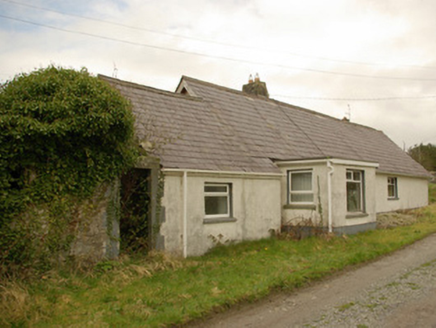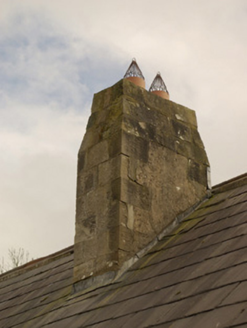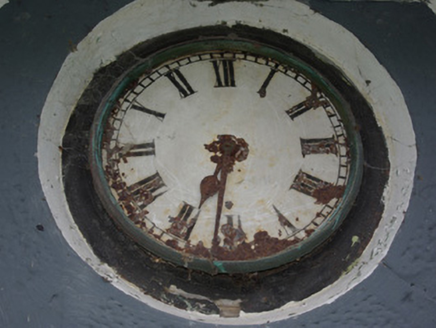Survey Data
Reg No
40840028
Rating
Regional
Categories of Special Interest
Architectural, Historical, Social
Original Use
Goods shed
Date
1860 - 1880
Coordinates
226173, 394801
Date Recorded
08/04/2008
Date Updated
--/--/--
Description
Semi-detached five-bay single storey former railway good’s shed associated with former Castlefinn Railway Station, built c. 1863, having mono-pitched canopy to former railway platform to the north supported on cast-iron columns. Now out of use and dilapidated. Pitched natural slate roof with grey clayware ridge tiles, smooth rendered chimneystack to the east gable end, and having surviving sections of cast-iron rainwater goods. Corrugated metal roof structure to platform canopy, formerly timber, with battened timber weather-boarded lip. Random rubble stone walls, formerly rendered, with tooled ashlar block-and-start quoins to the corners; smooth rendered finish to the east elevation. Square-headed window openings with plain raised ashlar lintels and surrounds, cast-iron multi-pane windows, and ashlar sills; horizontal wrought-iron security bars to some openings. Two square-headed door openings to the north elevation having plain raised ashlar lintels and surrounds, and with battened timber doors and double-doors. Set to south side of former Strabane to Stranorlar railway line, tracks now removed. Platform with cut stone kerbing to the north. Ruinous single-storey rubble stone outbuilding adjacent to the east. Detached single-storey former railway station to the east, now altered (later in use as a house, now unoccupied), having steeply pitched natural slate roof with cut stone chimneystack, roughcast rendered walls, and square-headed openings with replacement fittings. Clockface to the centre of the north elevation having dressed stone surround. Rubble stone boundary walls with soldier coping to site. Located to the south/south-west of the centre of Castlefinn.
Appraisal
This former railway goods shed and/or railway station house retains its original form and character despite being now out of use and now dilapidated. The retention of all salient fabric, including natural slate roof and cast-iron framed windows, adds to its integrity and visual appeal. The simple raised ashlar surrounds to the openings add interest to the otherwise plain north elevation and are indicative of the attention to detail afforded to even the most functional of buildings by the railway company responsible for its original construction during the mid-to-late nineteenth century. Its size provides an interesting historical insight into the scale of trade/goods transported along the railway network in Ireland at the time of construction. The location of this station close to the border suggests that this station may have been in use as a custom post from c. 1923 until the closure of the railway line in 1960. The now altered former railway station itself still stands to the east (possibly built in 1894 when the track has regauged - Griffith's Valuation), while this building forms a pair of related structures with the associated former railway worker’s house or office (see 40840027) attached to the west end. The construction to the platform canopy suggests that it may be a later addition, perhaps added during the first half of the twentieth century. This building was originally built to serve the Strabane to Stranorlar section of the Derry (Victoria Road) to Killybegs railway line, which was opened in September 1863 by the Finn Valley Railway Company. It was originally a narrow gauge railway line but it was later converted to the standard Irish gauge (5 foot 3-inches) in 1894. The railway line was completed as far as Killybegs in 1893. This section between Strabane and Stranorlar was finally closed to passengers on the first of January 1960, and to goods a few weeks later. This former railway building forms part of a group of structures associated with the formerly extensive railway network in County Donegal, and is an integral element of the built heritage and transport history of the east of the county. Sensitively restored and put into a suitable use, this building would make a strongly positive contribution to Castlefinn. The simple rubble stone boundary walls to site add to the setting and context.
